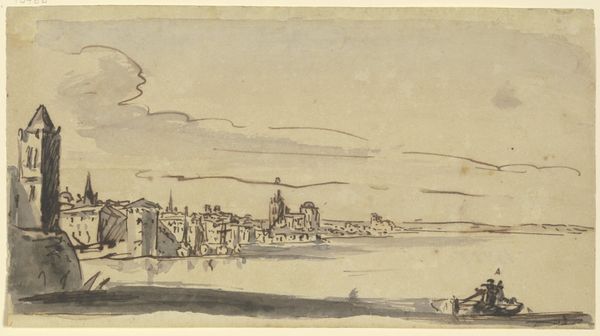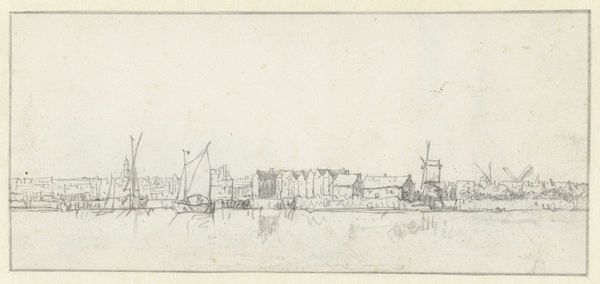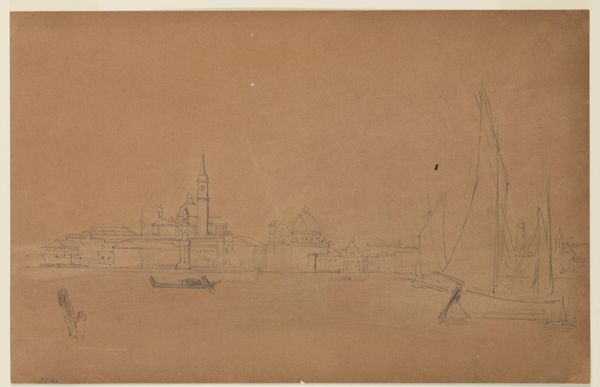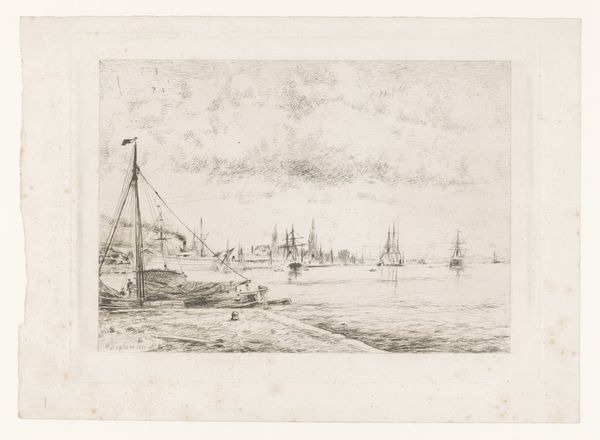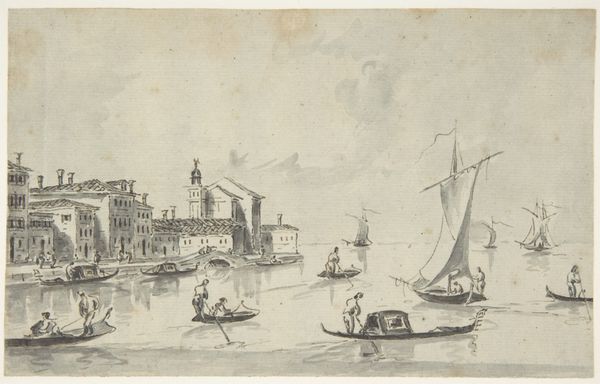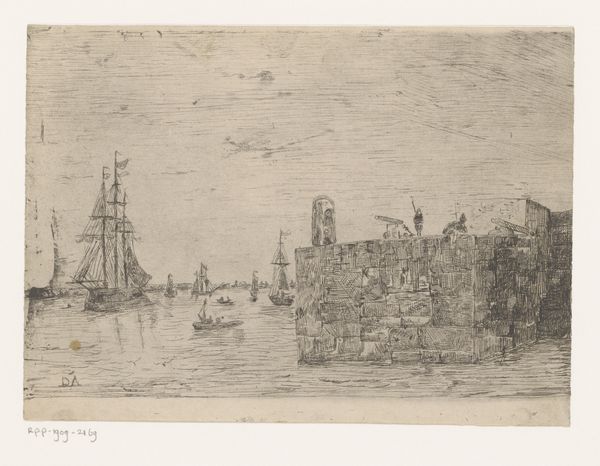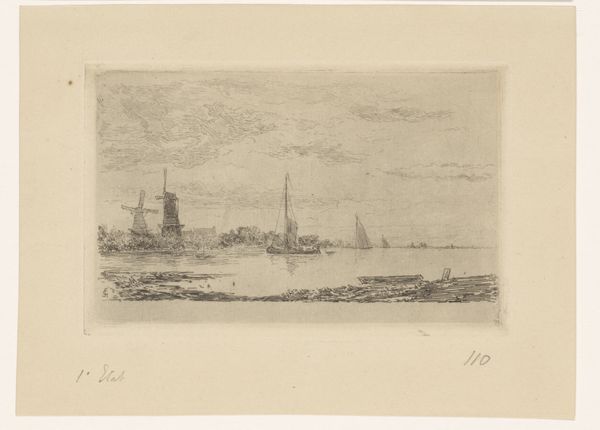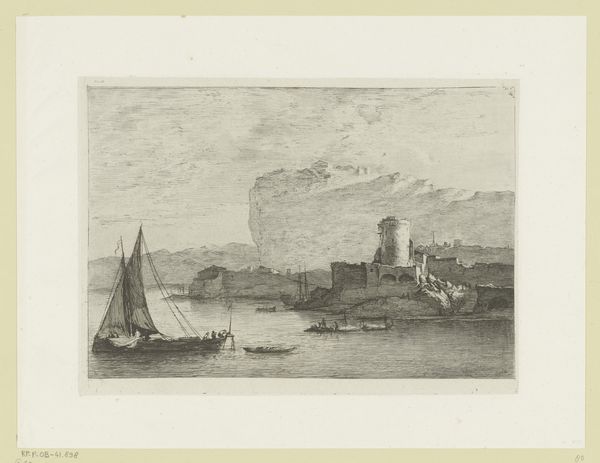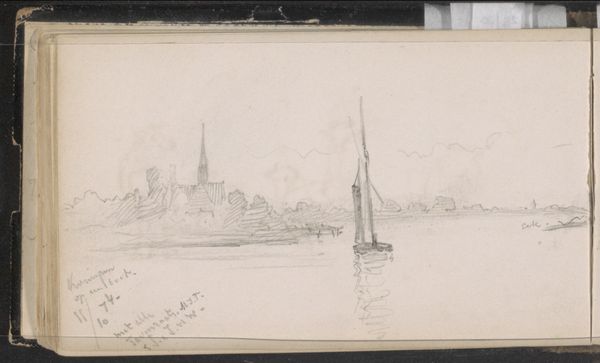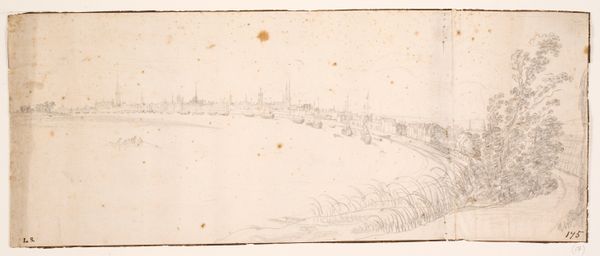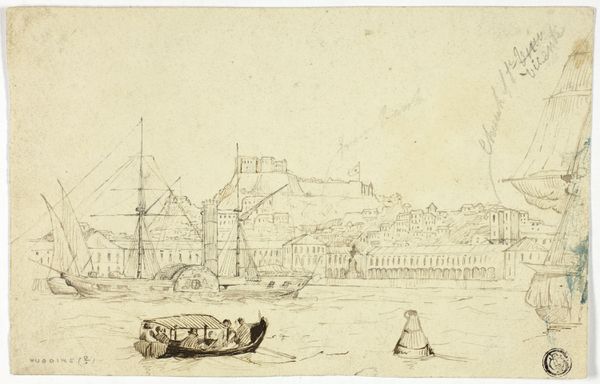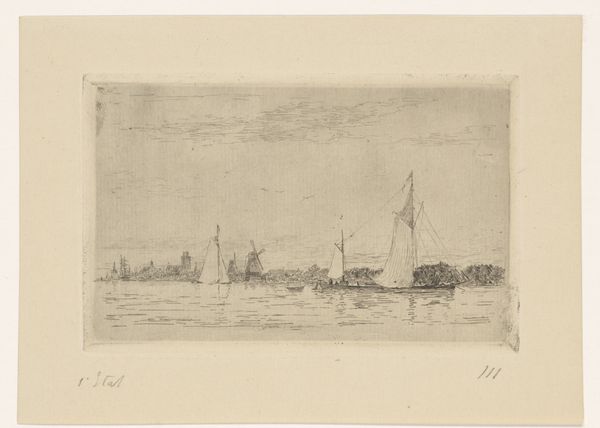
drawing, paper, pencil
#
drawing
#
landscape
#
paper
#
form
#
pencil
#
line
#
cityscape
#
realism
Dimensions: height 103 mm, width 162 mm
Copyright: Rijks Museum: Open Domain
Editor: Here we have Johannes Tavenraat's "Ships Before a City," thought to be from 1849, made with pencil on paper. The wispy lines give it such a transient feel. I'm curious, what stands out to you about this work? Curator: Well, for me, it's about interrogating what this seemingly simple drawing tells us about 19th-century labor and artistic production. We see the beginnings of industrialization in the city’s silhouette, juxtaposed against the traditional modes of transport – sailing ships. Consider the availability of paper and pencils at that time, and how that affected who could create art. Who had access to the materials, and how did the making process itself influence the subject matter? Editor: That’s an interesting point about access. I hadn't considered the role of material availability in defining art styles. Does the 'realism' tag fit here? Curator: It’s tempting to see "realism" because it depicts recognizable subject matter: ships and a city. But look closely – what kind of labor went into crafting a 'realistic' drawing with pencil? How does that inform our understanding of its intent? Is it really realism, or a commentary on it? Editor: So you're saying that examining the means of production – the pencil, the paper, the social context of 19th-century Holland – is key to understanding the drawing's meaning. It sounds like Tavenraat is engaging with themes of labor, industrial progress, and artistic accessibility through these very basic materials. Curator: Exactly! The act of drawing itself becomes a statement, democratizing art by focusing on everyday subjects and simple means, and yet revealing existing power dynamics and material constraints of art production. Editor: That really makes me appreciate the artwork more now, it seems like more than just a simple landscape. Curator: It's a reminder that even seemingly simple drawings are embedded in complex social and economic networks.
Comments
No comments
Be the first to comment and join the conversation on the ultimate creative platform.
